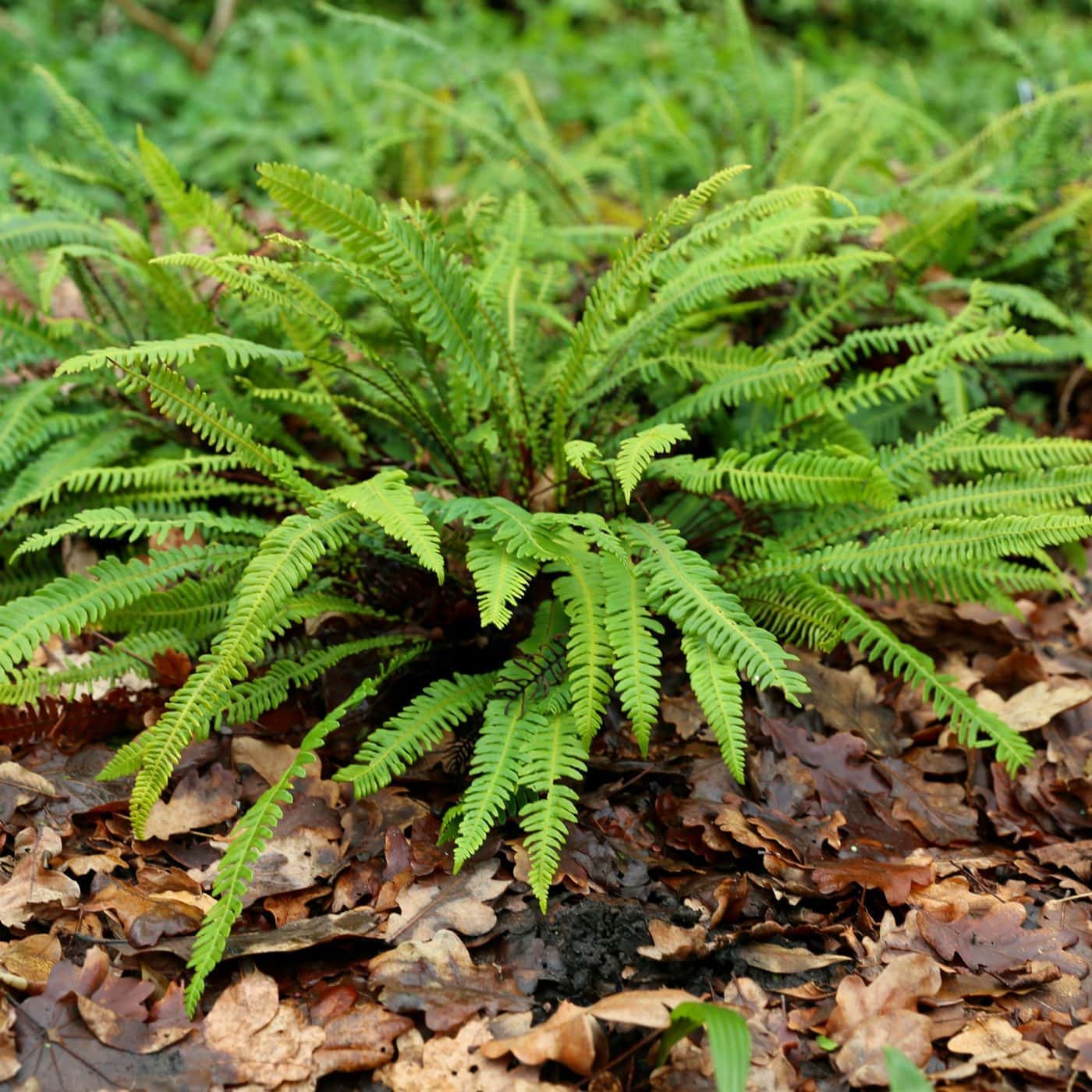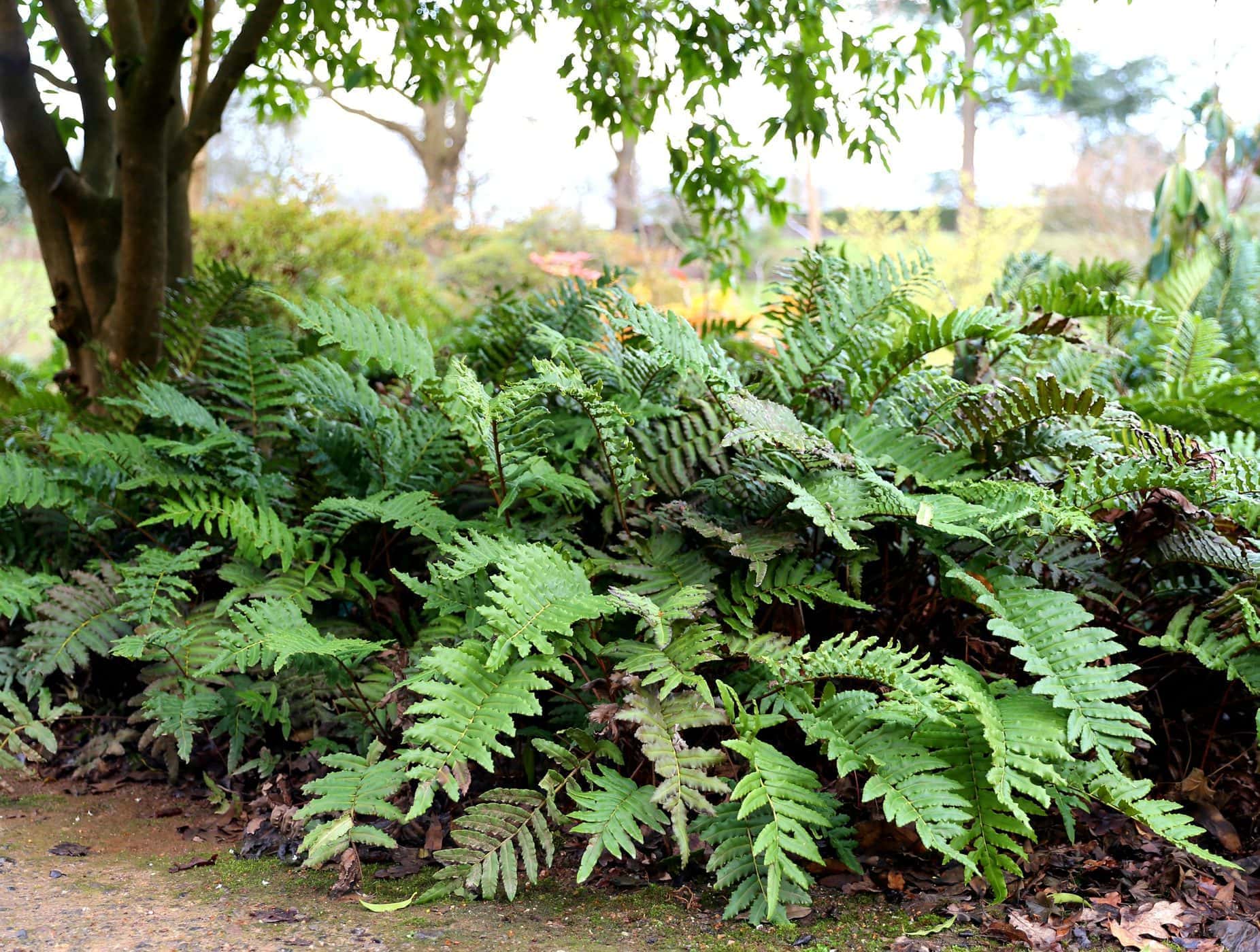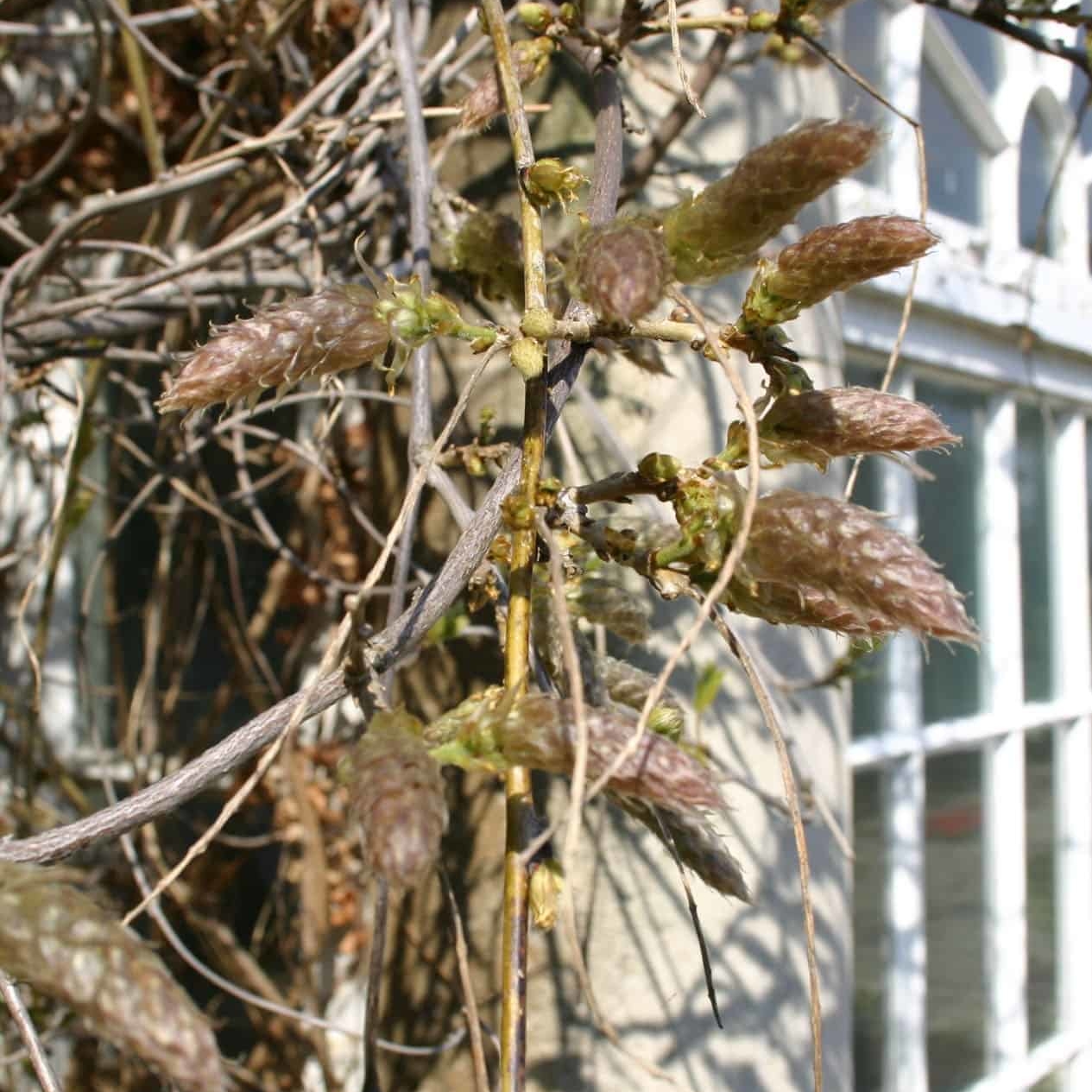Hardy evergreen ferns
There’s an evergreen fern for every spot in the garden, from damp to dry, full sun to full shade. Like grasses, ferns can hold their own, or form the foundation of a planting, knitting everything together through the seasons.
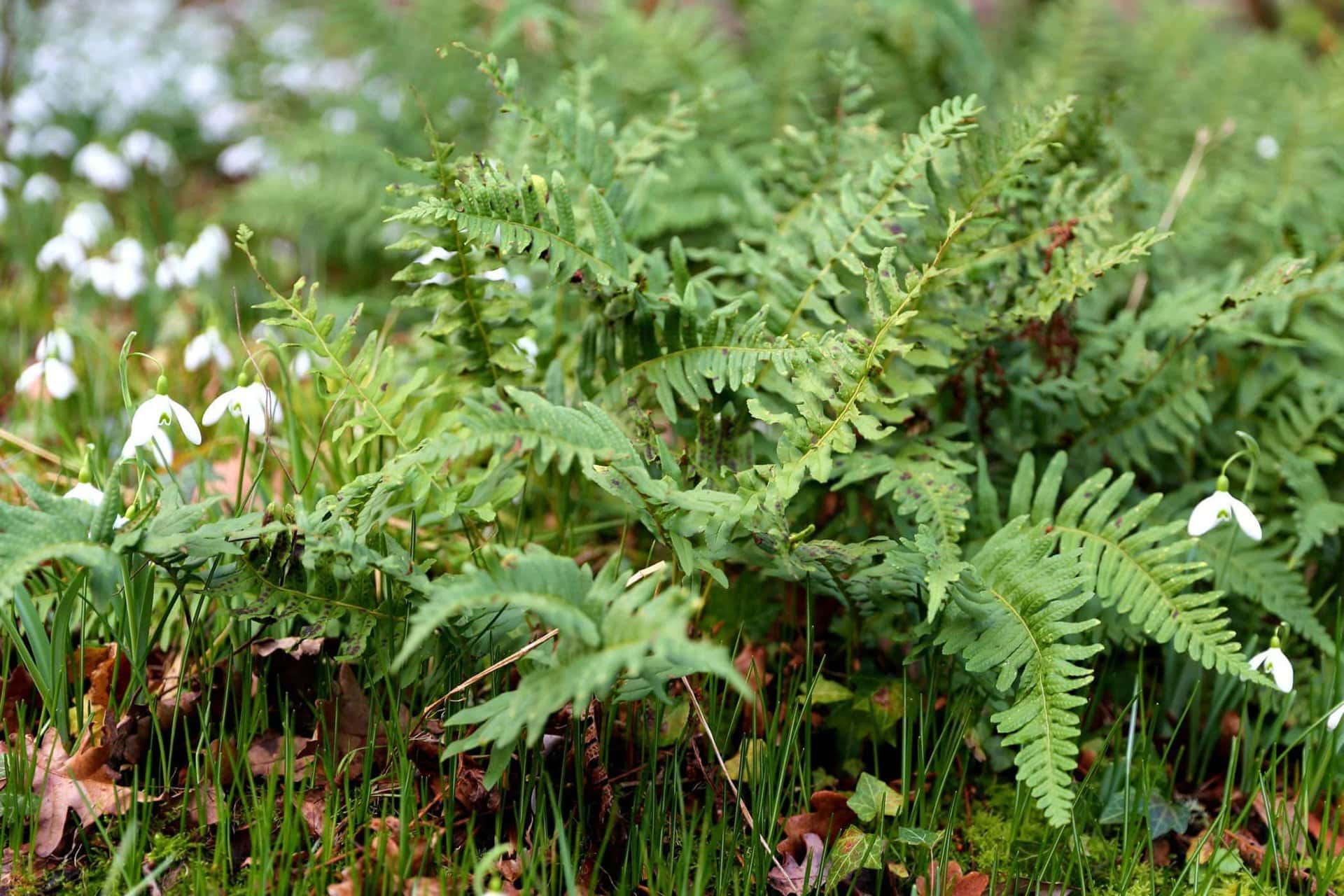
In terms of maintenance, I always cut evergreen ferns back in late winter, before the new fronds start to unfurl. Old faded fronds are removed in one fair swoop, saving the painstaking task of cutting out individual faded fronds from among the new growth later in the year.
All the ferns here are fully hardy, from at least -5°C to -10°C but most will tolerate conditions colder than -15°C. Many also have an Award of Garden Merit (AGM) from the Royal Horticultural Society, so you know they are good doers.
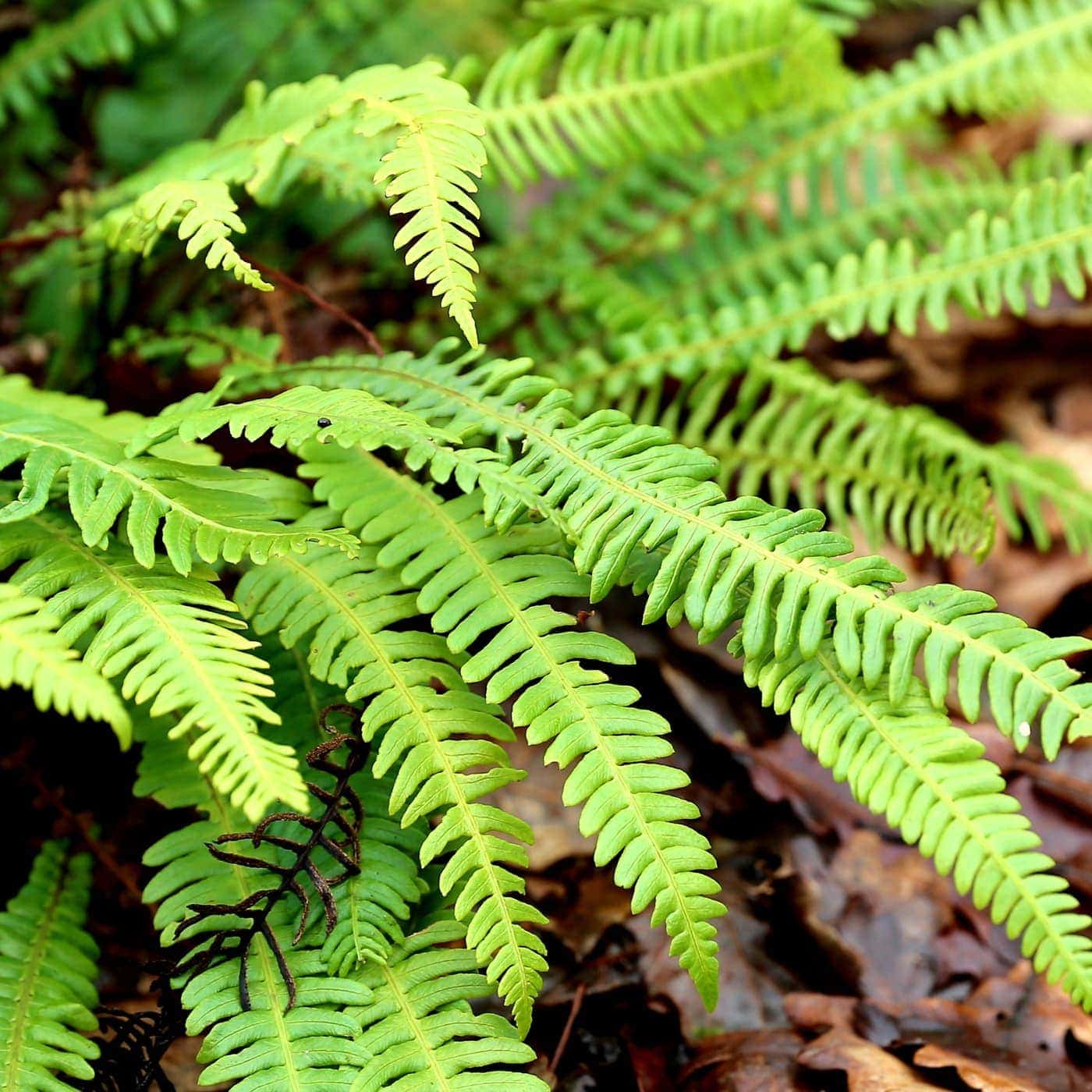
Struthiopteris spicant (AGM) (also known as Blechnum spicant) is a native British fern found across the northern hemisphere, known as the hard-fern. It is used as an indicator of ancient woodlands and hedgerows here in the UK. In the garden it will grow pretty much anywhere but the driest site, preferring a damp spot and soil rich in organic matter. It will grow in walls and open sunny sites, provided there is a supply of moisture to the roots. A fun thing to look out for on this fern are the two types of frond; it is dimorphic. Sterile fronds are long and flat, reaching outwards almost parallel to the ground, whereas fertile fronds that produce spores are narrower and upright growing from the center of the plant. This can also be seen in Parablechnum cordatum.
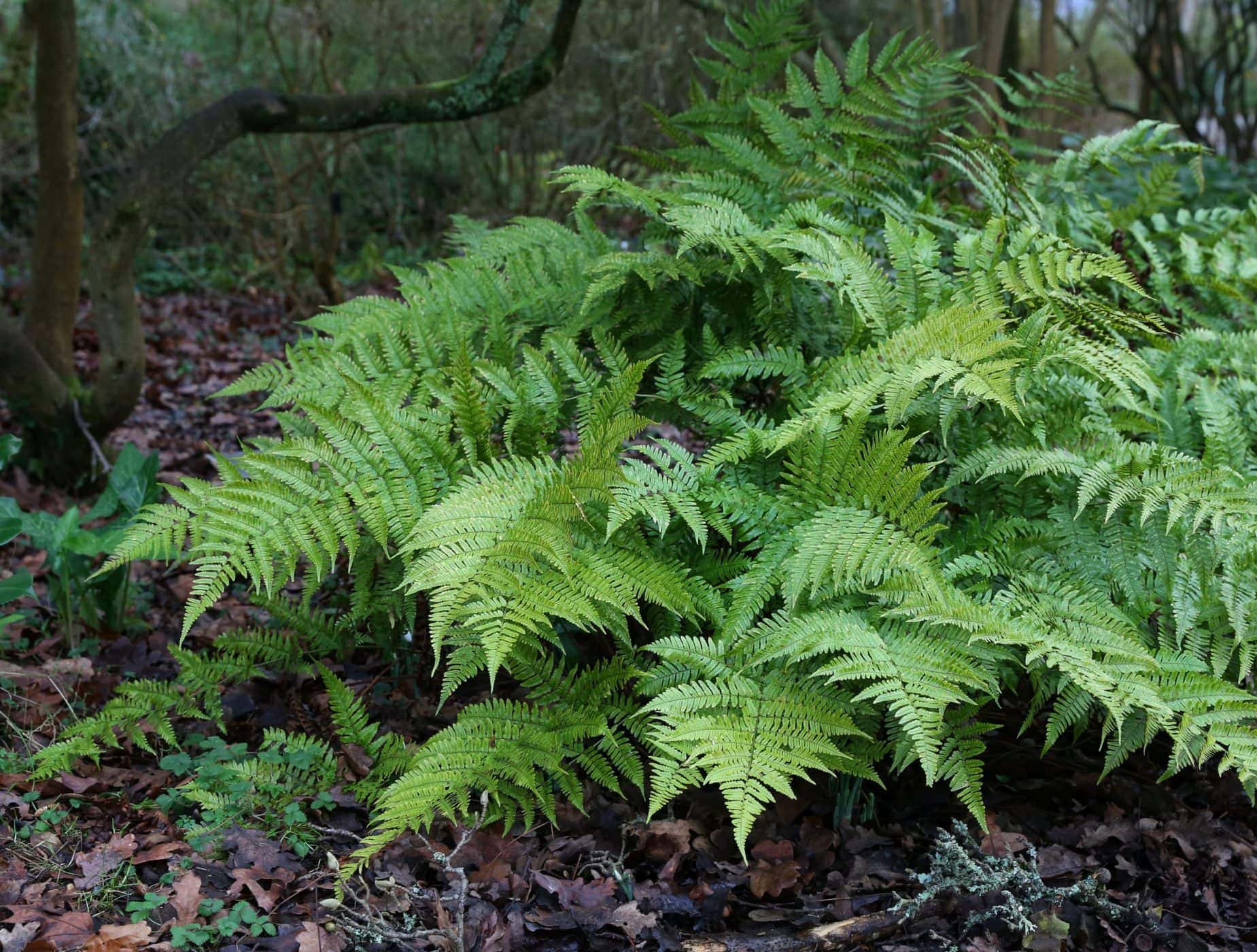
Dryopteris erythrosora (AGM), known as the Japanese shield fern or copper shield fern, comes from lightly shady woodlands across East Asia. This fern does well in full sun to full shade, from moist to dry conditions, but looks best in damp semi-shade. Eye-catching shiny coppery-pink young fronds are produced in spring; this is a fern with charisma. If you cut all old foliage down in late winter, before the new year’s fronds (crosiers) start to unfurl, the pinky-orange new fronds emerge in full view, making fabulous crosier crowns.

Polystichum polyblepharum (AGM) goes by the common names of Japanese lace fern, or tassel fern, originating from Japan and South Korea. The name polyblepharum means “many eyelashes”, in reference to the bristles on the frond stems. In spring, new fronds glow with golden ginger hair-like scales as they unfurl, going on to form a firm-structured upright shuttle-cock shape through summer and autumn. This fern needs a thoroughly well-drained shady spot.

Parablechnum cordatum (AGM) (also known as Blechnum chilense) is the Chilean hard fern, known in its native land as “costilla de vaca”, meaning “cow’s rib”. I can only imagine this is a reference to the thick and firm texture of the foliage, unlike the softness we generally associate ferns. This is a fairly big and very architectural fern, growing to around 1.2m and forming a robust evergreen thicket as the rhizomes spread slowly. This fern prefers not to dry out and will thrive in boggy spots, from full to partial shade.
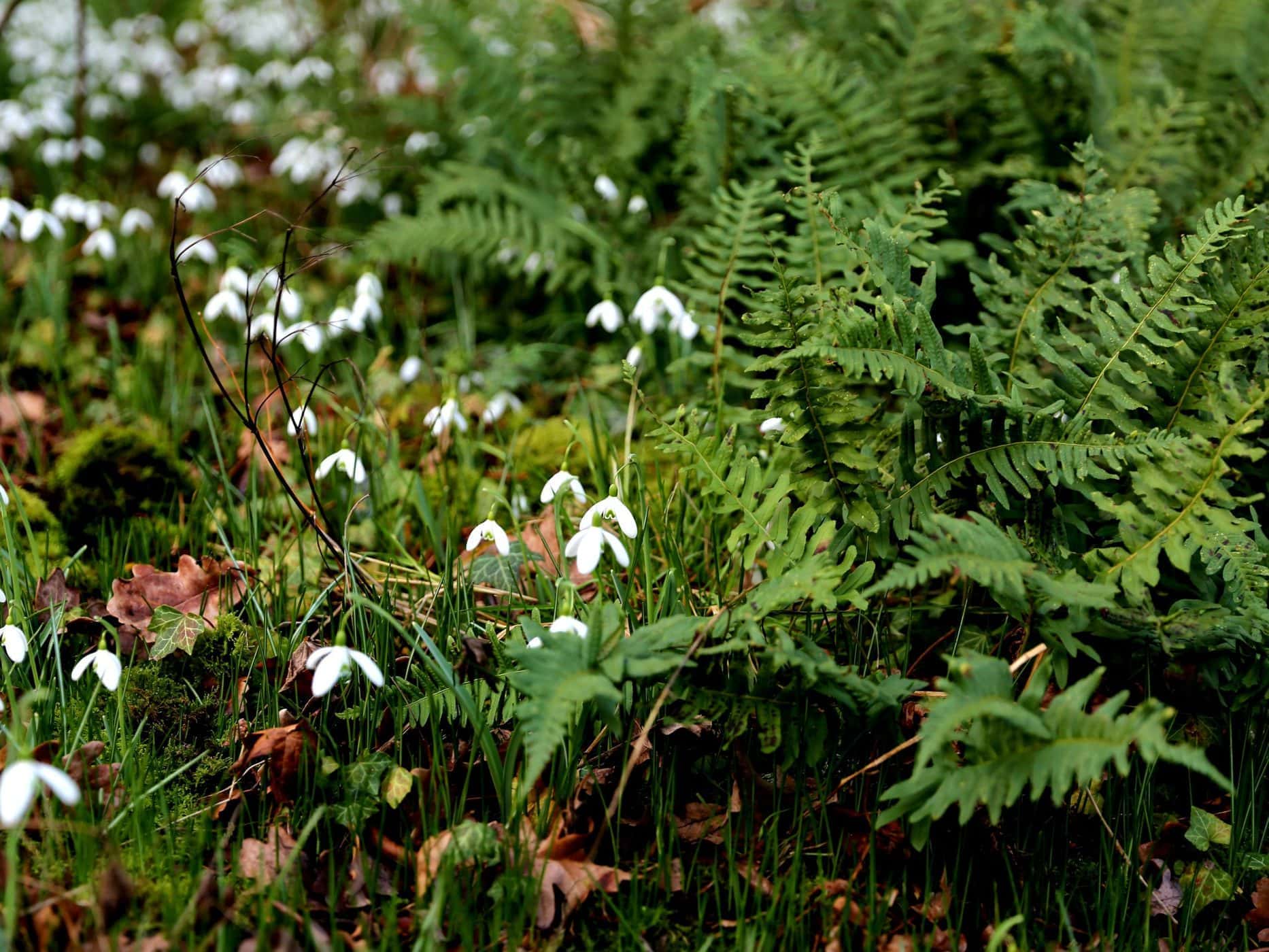
Polypodium vulgare is the common polypody, a native British fern found growing in well drained damp to dry conditions. Find it on old dry stone walls, forest floors and growing on the mossy branches of big old trees. Common polypody will grow in full sun to dappled shade, spreading slowly by horizontal rhizomes. This is a perfect fern for use in pots and containers, given its evergreen and drought tolerant credentials. I have it in pot arrangements mixed with potted sempervivums and drought tolerant grasses, for a very low maintenance display.

Polystichum munitum (AGM), the western sword fern, is one of the most abundant hardy evergreen ferns in the Pacific Northwest, from Alaska, through Canada and down to California. It comes from low altitude cool coniferous woodlands, where it thrives in damp and lightly shaded conditions, but is a tough plant able to tolerate occasional drought. In its native range, Polystichum munitum is used as a pain reliever by Native American and First Nations peoples.

Austroblechnum penna-marina (also known as Blechnum penna-marina), is the Antarctic hard-fern or the alpine water fern. This low and slowly creeping hardy evergreen fern is found wild alongside monkey puzzle trees in the Araucanía Region of Chile. Its distribution stretches down south through Argentina in the Magellanic sub-polar forests; the closest forests to the South Pole. Plant it in poorly drained shady sites, but it does survive drought by appearing to die back, only to bounce back with fresh green after a period of rain.
All photos taken by Owen Hayman in February 2021 in Oakwood, RHS Garden Wisley.
Owen Hayman
Owen joined the Bestall & Co planting and aftercare team in spring 2019. He is an RHS qualified horticulturist, holding a full Level 3 Diploma in Horticulture, and recently came in the top 3 at the Northern Regional Final of The Young Horticulturist of the Year 2019. After first doing a foundation diploma in Fine Art, he went on to gain a degree and masters in Plant and Soil Science from the University of Sheffield in 2014. Owen worked as a researcher on various field research projects in Alaska, Panama and Borneo. When not away in the field, he became obsessed with visiting gardens and nurseries across the British Isles and the Netherlands, developing his own garden, and then taking on a walled allotment garden as a personal project. He realised his true passion was in horticulture, and so moved away from academia and into the world of specialist plant nurseries and professional gardening.
Owen is now studying the Wisley Diploma, but continues to write articles for us on a monthly basis, and we're delighted to maintain contact with such a passionate and knowledgable plantsman.

